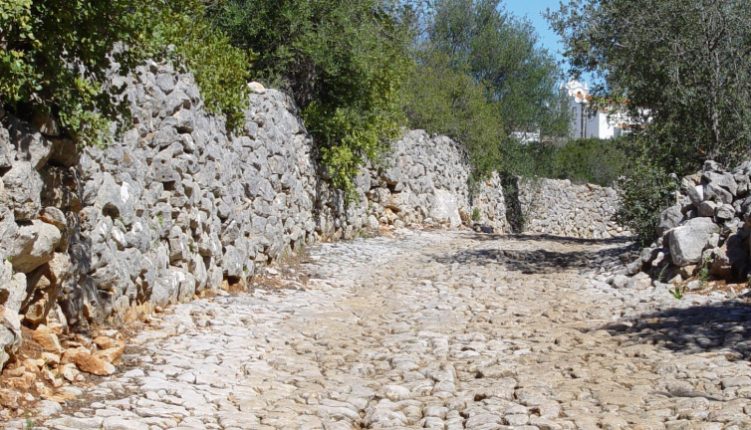Archaeological excavations carried out recently have shown there are remains of an ancient Roman city, Balsa, in Tavira. The existence of buildings and an east-west road have been confirmed but the limits of the urban area have yet to be defined.
The definition of where the 1st century city begins and ends is the main objective of a three-year research project, that began this summer, being conducted by the University of the Algarve (UAlg) together with Tavira Ciência Viva Centre.
Roman ruins can be found across the Algarve with various museums exhibiting some superb examples of archeological finds including mosaics, coins, wells and much more.
In São Brás de Alportel visitors will find a Roman road called Calçadinha (pictured), two sections of which, totalling 1.5kms, have been uncovered. During the Roman occupation this road would have left the city of Ossonoba (Faro) and headed north, passing through the Roman village of Milreu (Faro) and Vale do Joio (S. Brás / Faro).
At Milreu, Estoi, it is possible to see the remains of a Roman villa which would have been owned by a wealthy family. Of interest are a wine press, baths, mausoleums and a temple dating from the 4th century.
Cerro do Vila in Vilamoura is a Roman villa located very close to the coast and dates from between the 1st and 3rd centuries. There are beautiful mosaics to be seen and also evidence of a lake and dam. The small museum offers an insight into life during the Roman occupation of Portugal and is well worth a visit.
Portimão’s Quinta da Abicada ruins are not easy to access and are now overgrown but, should you be able to follow the tracks, you will find the foundations and fastly disappearing mosaics within overgrown fields and a view across the estuary created by two streams that the villa is built between.
There is also a very small site in Praia da Luz occupying prime real estate, just a stone’s throw from the beach. Unfortunately they are now closed to the public but to satisfy your curiousity baths and tanks designed for salting fish were found. The former are thought to be part of a spa. Along Rua do Poço there are ruins that are believed to be part of a Roman aqueduct.
Most of the larger towns along the Algarve have Roman links many of which are bridges such as those in Silves and Lagos. Silves’ museum includes a wall of the city within its confines together with a well, down which visitors can climb.
For more information on what is available visit the Algarve Cultural Heritage guide.
Image courtesy of CM de São Brás de Alportel


One thought on “Romans leave their mark”